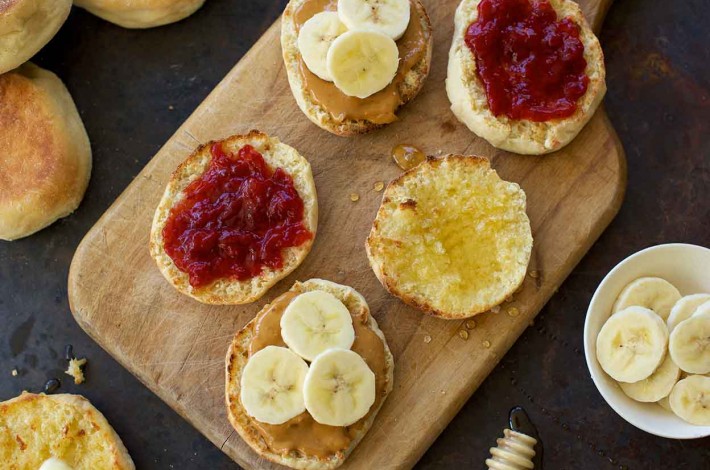


Why would you ever choose to make your own English muffins?
Between Wolferman's, Bays, Thomas', and even some of the store brands, there are plenty of perfectly good English muffins out there, easy pickings for anyone with a few bucks.
So why make your own?
Well, there's a secret many of us know; and if you're in on it, you're nodding your head right now, saying, "Yeah, that's exactly why."
The secret is something simple, really, and not baking-specific. Woodworkers know it. Fly fishermen do, too. Gardeners know it big time.
So what is it?
DIY.
A handy acronym for Do It Yourself.
If you love to bake, you're always up for a challenge. That crusty raisin-pecan rye from the fancy bread bakery? "I can do that." Lorna Doone shortbread cookies? "Those, too."
Tastykake Jelly Krimpets? Italian Scali bread? Classic whoopie pies?
Done, done, and deliciously done.
So, why make English muffins?
Because, as British climber George Mallory said about Everest, "Because it's there."
Once you've enjoyed a big, buxom, freshly made English muffin, full of flavor and the signature nooks and crannies this breakfast treat is known for, you won't want to go back to store-bought. Even quality store-bought.
Because you've climbed the mountain and earned the view – which is wonderful.
The following recipe makes 16 large English muffins. If you're paying $3 to $4 or more for half a dozen top-quality English muffins, you'll definitely save money making your own.
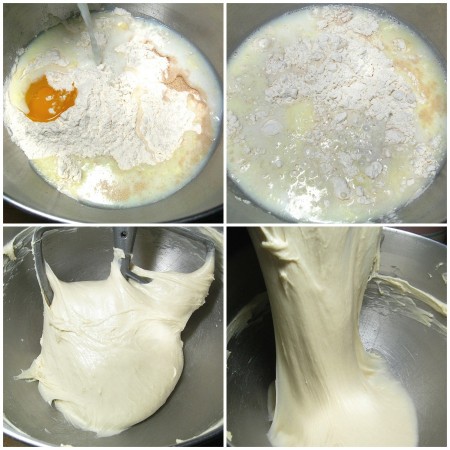
Place the following into a mixing bowl, or into the pan of your bread machine:
1 3/4 cups (397g) lukewarm milk
3 tablespoons (43g) softened butter
1 1/4 to 1 1/2 teaspoons salt, to taste
2 tablespoons (25g) sugar
1 large egg, lightly beaten
4 1/2 cups (539g) King King Arthur Unbleached Bread Flour
2 teaspoons instant yeast
This is going to be a very soft dough, so you'll need to treat it a bit differently than most yeast doughs. If you have a stand mixer, beat the dough using the flat beater paddle until it starts coming away from the sides of the bowl, and is satin-smooth and shiny; this will take about 5 minutes at medium-high speed. When you lift up the beater, the dough will be very stretchy.
If you have a bread machine, simply use the dough cycle.
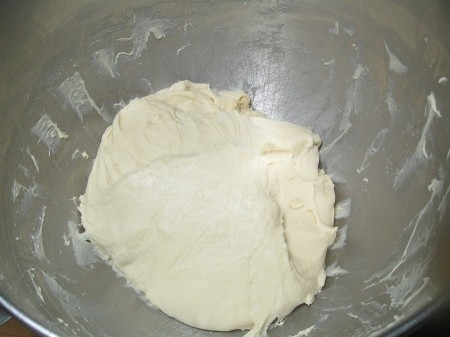
Scrape the dough into a rough ball, and cover the bowl. Let the dough rise until it's nice and puffy...
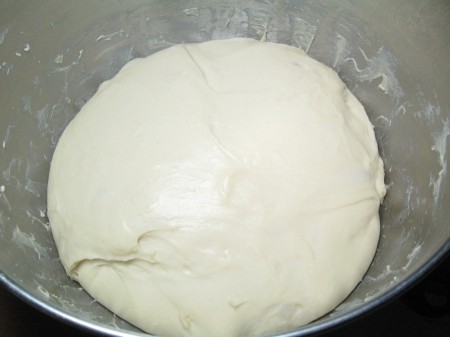
...like this. It'll take 1 to 2 hours or so.
Next, prepare your griddle(s).
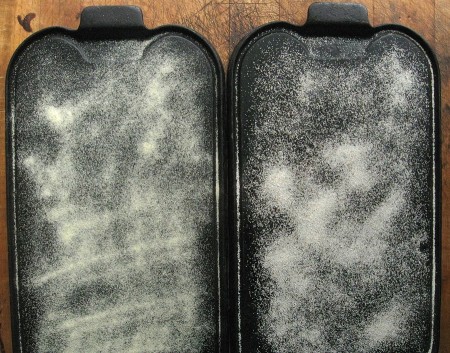
I'm fortunate to have two large cast iron griddles; each one stretches over two burners on my stove.
To give the muffins their signature crunchy crust, I sprinkled one griddle with semolina, one with farina (e.g., Cream of Wheat). I wanted to see which, if either, became less charred as the muffins cooked. And the answer is – no difference, use either.
Using two griddles allows me to cook all the muffins at once; but most of you probably won't have two griddles, so you'll need to cook the muffins in shifts. Whatever you use – an electric griddle, stovetop griddle, frying pan, electric frying pan – sprinkle it heavily with semolina or farina.
If you're using a griddle or frying pan that's not well-seasoned (or non-stick), spray with non-stick vegetable oil spray first, before adding the semolina or farina.
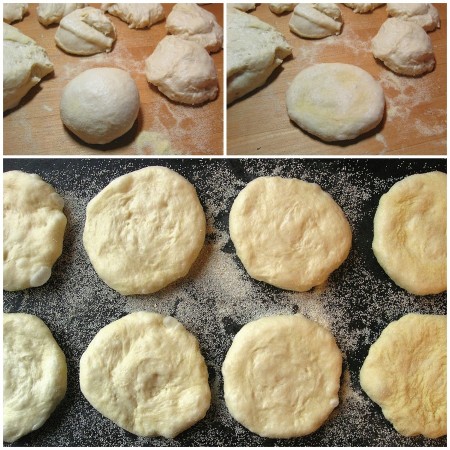
Divide the dough into 16 pieces. Shape each piece into a smooth ball, then flatten the balls until they're about 3" to 3 1/2" in diameter.
The easiest way to handle and cook these muffins is to lay them right onto the surface you'll be frying them on – in my case, the two griddles. That way, you don't have to move them once they're risen.
If you can't do this, sprinkle a baking sheet heavily with semolina or farina, and place the muffins on the sheet; they can be fairly close together.
Either way, sprinkle the tops of the muffins with additional semolina or farina.
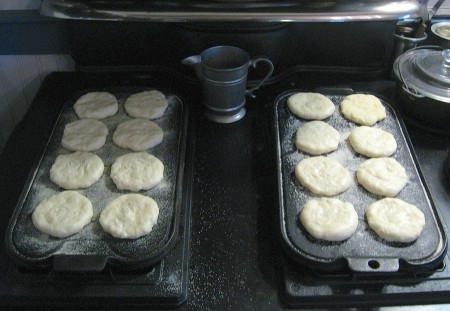
Here are my two pans of muffins, already atop their (unlit) burners.
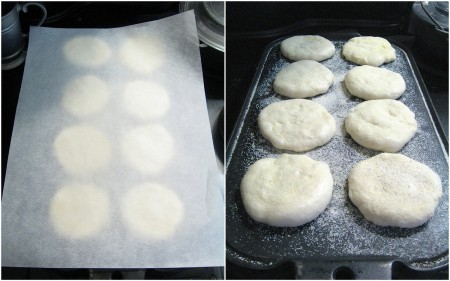
Cover the muffins (a piece of parchment works well), and let them rest for 20 minutes. They won't rise super high, but will puff a bit.
Now comes the somewhat tricky part: cooking.
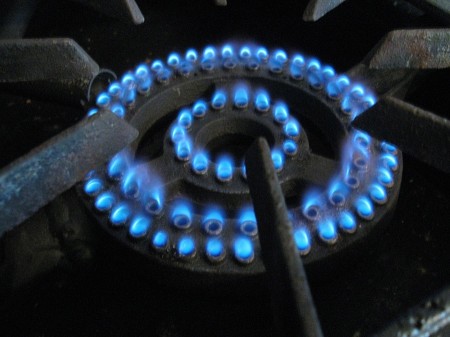
You need to find the exact amount of heat that'll cook the muffins all the way through and brown them perfectly – simultaneously.
Cooking the muffins for about 15 minutes per side over VERY low heat worked well for me. But, unless you have two large griddles, this long cooking time may become problematic, as the muffins waiting to cook could over-rise and become fragile.
The solution? Slightly higher heat and a quicker cook on the stove (say, 7 minutes per side), followed by a short bake in the oven.
If you find your muffins are browning too quickly, turn the heat down. If they're already as brown as you like, but still not cooked through, don't panic; you'll be able to finish them off in the oven.
But I'm getting ahead of myself.
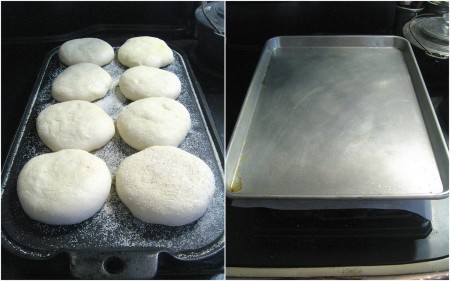
Within a few minutes of when you've begun to cook the muffins, they'll start to puff dramatically.
You want English muffins, not dinner rolls, so weigh them down gently to prevent further rising. A piece of parchment atop the muffins, and a baking sheet atop the parchment, works perfectly for me.
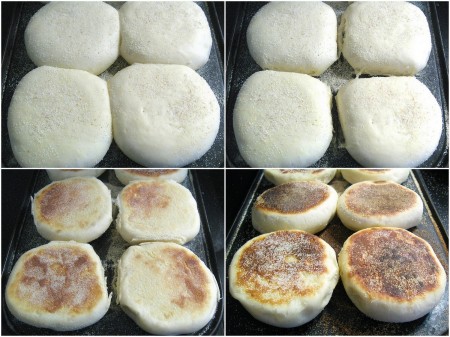
If they run into one another as they rise, simply use a sharp knife to gently cut them apart and separate them.
Bottom left, the muffins after they've been flipped over. Bottom right – I flipped them again, and it looks like they're done.
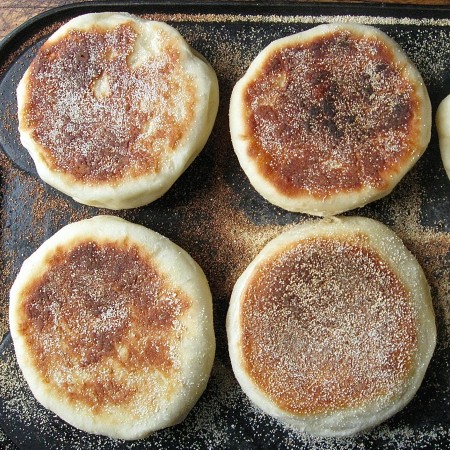
Let's see. REALLY nice crust, eh?
As you can see, the farina/semolina burned on the pan, but not on the muffins - score!
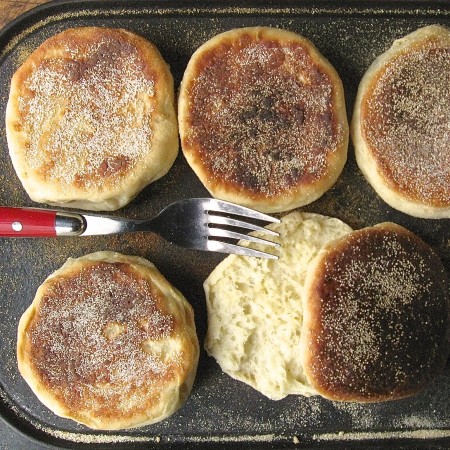
Let's check the inside.
Hmmm, the edges look good, full of nooks and crannies; but the center is a bit doughy.
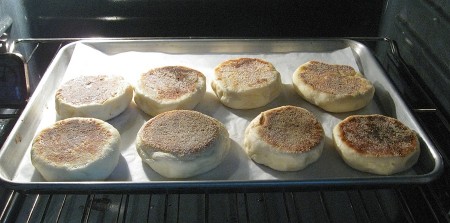
Into the oven they go – 350°F for about 10 minutes should do it.
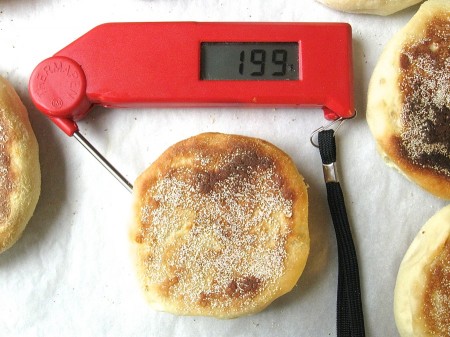
You want the muffins' centers to register right around 200°F on your digital thermometer.
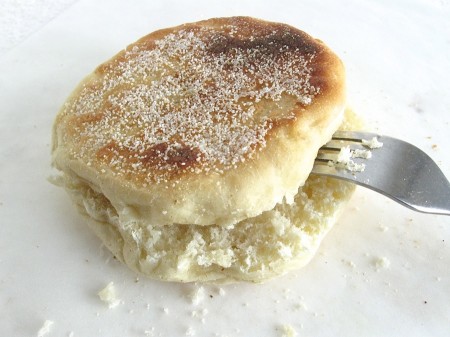
Let the muffins cool thoroughly before enjoying.
And remember: use a fork to split, not a knife to cut. Fork-split muffins will have wonderful nooks and crannies; knife-cut ones won't.
Even easier – use an English muffin splitter.
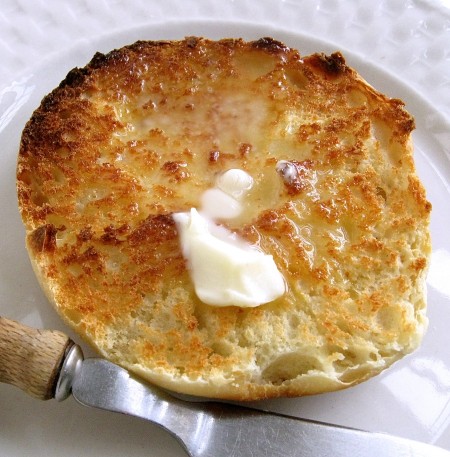
See? Is that one good-looking homemade English muffin, or what?
Move over, Thomas! Just like Jimi Hendrix did with Bob Dylan, we DIY-ers have got you covered.
Read, make, and review (please) our recipe for English Muffins.

